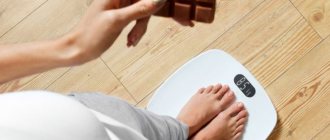What muscles are involved in longitudinal splits?
- Ankle joints.
- Quadriceps (anterior and partially lateral surface): straight, medial, intermediate, lateral.
- Comb.
- Biceps femoris.
- Calf muscles, soleus.
- Sartorial muscle (runs along the front and inner surfaces of the thigh). Responsible for abduction of the legs. Stretching this particular muscle has a decisive function in mastering the cross splits.
- Gluteal muscles.
- Quadratus lumborum muscle.
It is important to understand that in the process of preparing for the longitudinal splits, even the muscles of the shoulder girdle work. After all, the whole body is involved in stretching.
Types of child stretching:
I. Twine.
There are several types of twines: right, left, transverse and vertical. The vertical is a more complex element and here, in addition to stretching, you also need to be able to maintain balance on one leg. Stretching is very important for a future gymnast. Therefore, the element needs to be given a lot of attention, especially to the correct execution. Before doing stretching or flexibility elements, you must first “warm up” the child. Jump a little, run with him, do squats, squat (like ducks) so that the child’s muscles are elastic and easier to stretch. Remember - never pull on an unheated (“cold”) child; in addition to pain, you can also damage the baby’s ligaments. Do not do anything abruptly, only with smooth movements and springing several times.
There are several ways to stretch for splits:
1. Place the child on your knees with his back to you. He wraps his arms around your legs. Next, the baby lifts one leg, you take it with your hands (you can take it under the knee, you can take it by the foot) and pull it towards you. Be sure to ensure that the “pelvic bones” are on the same line (not skewed). Do 15-20 springs for each leg (look, of course, at the child - you can do 5 springs and repeat after 5 minutes). Don't forget to stretch both legs, otherwise the baby will be stretched one-sidedly. 2. If you have a wall bars, then the child throws one leg onto the wall bars (the higher, the better), and you slowly press the supporting leg against the wall bars (spring), in no case sharply. We do this exercise on the right and left legs, as well as put the child sideways against the wall bars and raise the leg to the side (cross-split stretch). This is preparation for the vertical split; the child learns to balance on one leg. 3. Sitting on your butt with your legs apart, two arms raised up, your back flat, we bend one by one to the right leg, to the left leg (we reach for the heels with our hands) and lie down in front on our tummy, with our arms in front of us. This exercise is good to do together with mom (dad) - sit opposite each other and bend over. Then, in the same position, we make circular movements from the right leg to the left (the tummy is as close to the floor as possible). 4. Sitting on the floor, we make a lotus, with our hands we press our knees to the floor (you can use springs, or you can slowly direct your knees to the floor). Ideally, when your knees are on the floor, then you can move on to more complex exercises. 5. We do an exercise similar to the lotus, only the child lies on his stomach, and the legs at the back are bent at the knees, the “toad” or “lotus on the stomach” position. You need to try to press the child’s butt to the floor. 6. The child lies on his back, two legs up (the legs are straight, extended, the back lies flat) - and you begin to slowly spread the legs to the sides, make small spring movements, trying to bring the legs closer to the floor. Ideal when the legs reach the floor. 7. Place a high chair or stool in front of the child (something low - see 50-60 in height, you can use a sofa) and put one leg on the chair, and the second leg moves apart into a split. And slowly spring your butt towards the floor. Try to keep your child's hips and shoulders in line. This exercise is suitable for stretching the right, left and cross splits.
Properly executed twine:
right or left split: the child sits on the split, shoulders and hips are in line, the back is straight, knees and toes are stretched; – cross split: stand on the side and see if the legs are on the same line, the knees and toes are tense, then the child is sitting correctly. If there is no line (i.e. a corner instead of a line), then this is not a split, but legs apart)).
If you want to achieve results in stretching, then it is advisable to do the exercises daily, then the muscles will become more elastic. And of course, the sooner you start doing it, the better. Another important element for twine is the fold.
II. Fold.
A fold is when a child sits on his butt, legs together in front of him, and his tummy lies completely on his legs, his hands clasped his heels, his knees are stretched like “strings.”
Exercises to help prepare for the fold:
1. The child sits on his bottom - his legs lie together in front of him on a small chair and we bend forward (put the tummy on the legs) trying to grab the heels. 2. The child sits on his butt, legs in front of him - we do exercises with both feet together: towards ourselves - pull towards the floor (20-30 times), knees stretched. Then we fixed our feet towards ourselves and leaned towards the legs, trying to reach the feet and grab them. 3. Standing position: legs together, knees extended, bend forward - you need to put your palms completely on the floor, then try to hug your legs. This exercise can also be performed in motion: we take small steps with our legs together with a forward bend and reach the floor with our hands (or place our palms on the floor), the tummy should lie on the walking leg. 4. We stand facing the wall bars - we throw one leg onto the wall bars at the level of the hips (hips and shoulders on the same line) - and bend towards the leg (to the right and to the left).
Your baby will be better able to do these exercises if you are an example for him! Do these exercises opposite each other and point out your baby’s mistakes. Be a positive example for him! What the fold exercise does is stretch the hamstrings, which play a big role when stretching into splits.
How to do the longitudinal splits correctly
Technique for performing longitudinal twine
- Place your hands on the floor.
- Press your palms fully into your hands, minimizing stress on your fingers and wrists.
- Move your back leg smoothly back with your toes along the floor.
- The forefoot moves forward on the heel or with the toe straightened in advance.
- Once you reach the splits, bring your feet into the correct position.
Option for advanced
- While sitting in a longitudinal split, remove the help of your hands.
- Take them to the sides, behind the head or in an overhead grip of the elbow joints.
- Keep your back straight, without arching too much.
Increasing leg extension in splits
- Sitting in a longitudinal split, lower yourself towards your front leg, slightly tilting your body to the side.
- Keep your legs straight and perform smooth swaying motions with your pelvis.
- Perform rocking movements for 4 seconds on each side.
How to do the cross splits - exercises in pictures
Exercises to develop the flexibility necessary for the splits are very useful in themselves. They help improve blood circulation in the pelvic area, increase the mobility of the hip joints, make ligaments more elastic, and strengthen the abdominal and leg muscles. To achieve rapid success, you need to listen to your body and follow the basic rules of stretching, especially during warm-up. You should exercise quite often, but without fanaticism - the body needs time to recover.
Perform these exercises for cross splits regularly and you are guaranteed success.
Developing joint mobility
• Stand next to a wall, a chair, or any object that you can hold onto with your hand. Perform circular movements in the hip joint with each leg in one direction and the other. Try to operate with a permissibly large amplitude of rotation, lifting your hip as high as possible and opening it as much as possible.
• Raise your right thigh in front of you to a right angle with your body, perform circular rotations with your shin in both directions. Repeat with your left leg too. This exercise will prepare your knees well for cross splits.
Warming up the muscles
• Feet slightly wider than shoulder width, toes pointing out to the sides. Squat until parallel to the floor, spreading your knees and hips wide, keeping your back straight. Repeat 10 times, on the 11th, stay at the bottom for about half a minute. Place your hands on your hips and gently open them.
• Place your legs wide, feet parallel to each other. Do 10 side rolls from foot to foot. Try not to lift your feet off the floor, but roll in a straight line, without lifting your pelvis up. It would be ideal to keep your back straight and your arms extended in front of you.
Stretch the back of the legs as well as the lower back
• Legs wide, palms placed on the sacrum, fingers up. Gently bend back, pull your shoulders and shoulder blades away from your ears, and stand there for 30 seconds. Then bend forward until parallel to the floor, extend your arms in line with your body, hold the position for 30 seconds. As you exhale, bend over and stretch your arms down. Try to straighten your lower back, twisting your tailbone upward, trying to reach the floor with your forearms.
Stretches of the hamstrings, lower back, semitendinosus muscles
• From a sitting position, spread your legs wide to the sides. Straight arms above your head, stretch your whole body up. Keeping your spine stretched, carefully make 10 circular movements with your body clockwise and counterclockwise.
• Stretch your arms above your head, turn your body towards your right leg, stretching your spine, and lean forward. Reach toward your thigh with your stomach, not your chest or head. Try to grab your foot with your hands. If you have enough flexibility, pull your foot towards you and lower your body even lower, straightening your back. Hold this position for 1 minute, repeat on the left side.
• Next we make a fold. Stretch your spine following your raised arms, and exhale as you bend forward. Keep your spine stretched and aim your stomach toward the floor. Hold a position that is comfortable for you for several minutes. Each time you will bend lower and lower. Make sure your toes are pointing straight up.
Opening the joints, stretching the inner thighs
• Sit with your back against the wall, in a butterfly position. Move your knees up and down a few times, relaxing your hips. Using muscle strength(!), pull your knees towards the floor, then gently press on them with your hands. If your joints are well open, move your heels even closer to the perineum and lean forward, keeping your back straight. Be careful with your knees: if you feel discomfort, reduce the pressure or come out of the pose - it is the hip joints that should be involved here.
Frog
• On all fours, spread your knees wide, bringing your feet together. Gently pull your pelvis toward the floor, arching at the lower back. Move to your forearms. Try to lower your pelvis as low as possible without lifting your feet. It's good if someone holds your feet together, pressing them to the floor. Or you can fix them in the space between the floor and the sofa or radiator. This exercise effectively stretches the groin area.
Adductor Stretching
• Lie on your back, lift your legs up along the wall, and then open them as wide as possible. You can gently pull your hips down with your hands. Stay here for about 5 minutes. Collect your legs, press your knees to your chest, and rest a little. Repeat 2 more times.
Preparing for the splits
• On all fours, straighten one leg to the side. Sliding along the floor, slowly move apart, gently lowering your pelvis down. Move to your elbows and hold the position for 2 minutes. Repeat on the other side.
Cross twine
• From a standing position, spread your legs as wide as possible, place your hands on the floor, and do 10 push-ups. When you feel that you can move further, spread your legs even wider, trying to put your elbows on the floor. Hold the position for at least 1 minute. Gradually increase the delay time. Subsequently, you can lie down on the floor with your whole body and congratulate yourself on the cross split.
Some tips:
1. For stretching, dress as warmly as possible. This will help keep your muscles warm, making it easier to stretch. 2. Perform each exercise with a straight back - this will increase the effectiveness of stretching and also protect you from injury. 3. Keep your breathing even - it will be easier to relax. 4. Hold each position for at least 1 minute, gradually increasing the time - this way you will achieve results faster. 5. If you just started exercising and you don’t have enough flexibility to reach something (your feet, for example), use a strap.
How to stretch the back leg in a longitudinal split
In order for the leg to be straight, without bending the knee when moving back, each part of it must be well stretched. Therefore, it is necessary to perform leg warm-up and basic stretching exercises. During the training process, monitor the active work of the ankle and high-quality muscle development; they should be stretched regularly. Do not try to immediately go into the splits; first you need to prepare in detail, stretch your muscles and joints to the required level. The difficulty of maintaining a straight back leg in the splits lies only in the insufficient degree of preparation for the exercise and incorrect technique (excluding structural features or contraindications). Read more about leg stretching →
How to warm up your muscles
Before stretching into the splits, it is important to warm up and tone your whole body. A preliminary 20-minute cardio load will prepare the muscles for active work and allow you to master the splits faster.
Warm-up benefits:
- Increases muscle plasticity;
- Improves the flexibility of tendons and joints;
- Increases the performance of muscle fibers;
- Improves blood circulation and supplies oxygen to muscles.
The preparatory warm-up before stretching for the splits is simple. This could be jumping rope or active dancing for 5-10 minutes, deep squats and leg swings in both directions. Tilts and circular rotations with the head, circular rotations with straight arms, tilts with the body and rotations with the pelvis, complete with circular movements of the feet, then the knees and the entire leg.
After the preparatory warm-up movements, you can move on to the main set of warm-up exercises for splits at home.
Common longitudinal twine mistakes
- Turn the knee of the back leg to the side. The kneecap of the back leg should be firmly on the floor, with the heel of the foot pointing upward. Hips point forward, not to the side.
- Turn the shoulder and body to the side. The body position should be level, the back should be straight, without bending, the shoulders should be straightened.
- Lack of auxiliary equipment. If the stretching is not yet perfect, it is necessary to use special equipment (a pillow under the ankle/knee of the back leg for better gliding, books to support the arms) in order to perform the splits without violating the technique.
- Leading the front leg to the side. The legs in the longitudinal split should be positioned in a straight line, the pelvis directed clearly forward, the front leg exactly in front.
- Twisted back and shoulders . Sometimes insufficient stretching of the back muscles does not allow you to keep it in a straight position. Comprehensive stretching of the whole body is important here.
How to do the splits in 10 minutes a day?
When you regularly practice stretching, after a while you will be able to quickly do the splits, devoting only 10 minutes a day to special exercises. The stretching process occurs individually for each person: it all depends on age and physical fitness. Before we reveal a few secrets of how to do the splits in 10 minutes a day, we will teach you how to get into the correct position during training.
- In order to do the longitudinal splits, you need to stand on the knee of your leg extended back and shift your weight to your heel. The other leg should be straightened and pointed forward.
- If you need to learn how to do a cross split, spread your legs wide and point your feet forward. Lower yourself slowly, supporting yourself with your arms.
There are a few more secrets that will help you do the splits in 10 minutes a day:
do not rush, lower yourself into the splits slowly, carefully spreading your legs to the sides until they land on the floor at an angle of 180 degrees; learn to relax; don't stop there, keep training.
FAQ
How quickly can you do the longitudinal splits?
Only regular training will help you achieve results quickly, keeping a break of 1-3 days between them is mandatory. Muscles need time to recover. From daily activities, the body gets tired, overexerted and productivity drops.
How long does it take to do the longitudinal splits?
From several months to several years. The speed of obtaining results depends on the level of initial training and individual characteristics. Mastering the longitudinal split and achieving flexibility are not aspects that require haste. Especially for those who are learning exercises from scratch.
Is it possible to do the longitudinal splits at home?
Definitely yes. You can learn how to do the splits and master stretching at home. The main thing in this matter is to master the technique, add variety to your training, devote time to it often and regularly, follow the recommendations, take your time and do not lose motivation.
How often should you workout at home?
At first, after 2-3 days, then according to your well-being and mood. Then learning how to do longitudinal splits at home will be faster than it seems.
What can cause a crunch in the thigh during a longitudinal split?
A crunch when stretching, which is not accompanied by pain, is a normal variant and can occur even in absolutely healthy people.
The negative impact and manifestation of crunching (clicking) may be due to the following reasons:
- Excessive stress on the joint, too frequent training.
- Sedentary lifestyle, lack of regular physical activity.
- The body is not prepared for training, the lack of warm-up exercises/active warm-up for the splits.
- Fundamentally incorrect exercise technique.
- Presence of contraindications to stretching, diseases of bones and joints.
Also read: How to do back stretches → Morning stretching exercises → Stretching exercises before bed →
Exercise “Lizard” for longitudinal splits
- Start by taking a push-up position, but with your elbows bent 90 degrees and your hands flat on the floor.
- Keep your legs and back straight in the starting position.
- Now, without changing anything in the upper part of the body, take a big step forward with one leg. So your heel should be at elbow level. The second leg remains straight and extended back.
Exercise "Lizard".
- Afterwards, begin to sway slightly back and forth in this position. At the same time, you must look in front of you, that is, your head must be raised. After a minute in this position, switch your legs.
Split exercises from scratch to perform at home seem complicated only at first glance. Yes, they are shown in photos by professionals, but with proper training and patience, you will quickly reach this level. So, go for it!
Do you know how to do the splits?










